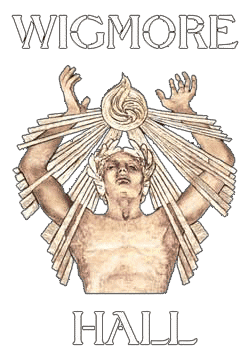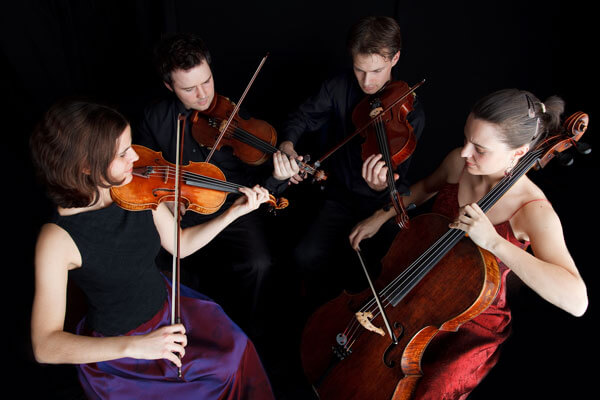 There couldn’t be a more appropriate time for American pianist Jonathan Biss to bring the “deeply personal and achingly vulnerable” works of Robert Schumann to the forefront of public discussion. Biss and the Elias String Quartet presented Under The Influence, a program combining works of Schumann, Purcell, and Timothy Andres on May 14, 2013 at Wigmore Hall in London, on the eve of the American Psychiatric Association’s release of their latest Diagnostic and Statistical Manual of Mental Disorders (DSM-5). DSM is an essential tool that sets about categorizing and documenting diagnosis in psychiatry, with the longview of providing better treatment for patients so that their lives are consequently more comfortable. Where this becomes problematic, is in the DSM being perceived as an attempt to conform mental illness to checklist status. Diagnosing something like schizophrenia is extraordinarily complex. There exists a danger of treating each person with certain symptoms as a “case,” i.e referring to a handbook as opposed to analyzing traumas caused purely as a consequence of an individual’s interaction with the physical world.
There couldn’t be a more appropriate time for American pianist Jonathan Biss to bring the “deeply personal and achingly vulnerable” works of Robert Schumann to the forefront of public discussion. Biss and the Elias String Quartet presented Under The Influence, a program combining works of Schumann, Purcell, and Timothy Andres on May 14, 2013 at Wigmore Hall in London, on the eve of the American Psychiatric Association’s release of their latest Diagnostic and Statistical Manual of Mental Disorders (DSM-5). DSM is an essential tool that sets about categorizing and documenting diagnosis in psychiatry, with the longview of providing better treatment for patients so that their lives are consequently more comfortable. Where this becomes problematic, is in the DSM being perceived as an attempt to conform mental illness to checklist status. Diagnosing something like schizophrenia is extraordinarily complex. There exists a danger of treating each person with certain symptoms as a “case,” i.e referring to a handbook as opposed to analyzing traumas caused purely as a consequence of an individual’s interaction with the physical world.

For Biss, the categorization of Schumann as a man inflicted with some kind of madness is often what mistakenly lies at the heart of audience interpretations of creativity. They sideline the sonic experience of the music due to a fascination for the artist’s biographical context. Indeed, Schumann’s works were often censored by those around him. His wife Clara, an accomplished composer in her own right, deemed some of his compositions too difficult for the public to relate to, or even understand (let alone to be reinterpreted 150 years later by fresh-faced Brooklyn composer Timothy Andres). As part of his Under The Influence program, Biss outlined his fascination for Schumann’s music, as opposed to any external attachments to the psychiatric diagnosis of the man responsible. His idea was to emphasize influential lineage through time, by exploring the work of composers Schumann was directly influenced by, Purcell for example, and those contemporary musicians who cite him as a great influence today, such as Andres. Biss used these influences as a tool for framing his segment on a recent BBC Radio 4 discussion concerned with the subject of music and madness.
In preparation for the concerts at Wigmore Hall, he outlined his initial concerns regarding the stress that is put on Schumann’s final years, instead of the music he created. The resulting conversation framed the performance exceptionally well. However, it is easy to become transfixed on the biographical aspects of the composer and therefore, consciously or otherwise, seek out ghosts of the past within their work. Previous to reading Biss and listening to his argument surrounding the debate on BBC Radio 4, I often found myself guilty of this approach, but this performance was a reminder of why those preconceptions need to be sidelined in order for Schumann’s marvelous music to speak for itself.

As the evening’s centrepiece, Biss and the Elias Quartet premiered Andres’ Piano Quintet, the essential contemporary interpretation of Schumann’s influence of the night. It provided a fine example of the reach the revered German composer’s music is still having on performers today as well as embodying the most eagerly anticipated composition on the bill. Biss has admitted in the past that his feelings toward Schumann go “beyond love and admiration” and when taking into account that Andres’ piece was written specifically for the evening’s performers, it’s not hard to see why such emphasis had been placed on it.
With a capacity of 545, Wigmore Hall makes for an intimate venue and a wonderful environment to experience live music. The painted domes and Renaissance style interior provides a warm and inviting setting that retains that crucial sense of intimacy. I contemplated Biss’ argument and waited to embrace the works of Schumann in a way that I hadn’t done in the past. The close atmosphere and the stillness of the audience that evening indicated that others were hoping to do the same, perhaps, and I wondered if they too had heard Biss speak so eloquently about his intentions. The Elias Quartet began by exemplifying Schumann’s historical lineage via a collected and focused selection from Purcell. The musicians exposed an emerging connection with the music, where their expressions and bodily movements were engaged and unperturbed in the throes of practice. Then, during Schumann’s wonderfully executed String Quartet in A minor, which followed, I caught myself opening up to the piece in a fresh light. I began to understand certain sections as fragments within the bigger picture, as opposed to sporadic, stylistic changes in the composer’s temperament.
After a short interval, Biss spoke to the audience about his feelings toward the composer at hand, which interrupted my train of thought. I had brought all of this interpretive baggage to the concert out of choice, but I was attempting to remove any external elements and experience the music as it was played. Unfortunately, his introduction got in the way of that somehow.

Regardless, the moment I was looking forward to most, Biss at his piano, arrived. He began by playing Andres’ much anticipated Piano Quintet. It provided the perfect opportunity to explore structural impact through a contemporary lens. Andres achieves this through conducting a thought experiment, deconstructing Schumann’s monumental forms into simpler piano sets. Every aspiration to contrast this piece with the surrounding material was achieved extraordinarily well with its “churning mass of tremolos” and “slippery textures.”
An exquisite rendition of Schumann’s Piano Quartet in Eb Op. 47 soon followed. With incredible tact, for Biss is truly a remarkable pianist, he offered a stark contrast to Andres’ newfangled approach. The sequence allowed me to let go and live the music as it was performed, completely cut off from any supplementary theorizing or interpretation. It was indeed sublime. Biss’ teaming up with the Elias Quartet made for a stunning collaboration. This was not one man’s reenactment of a composer who had shaped his musical upbringing, this was a collective effort in presenting the music as it is, as it stands, in all its unrivaled majesty.
























